
Review on 🔌 EW-7822ULC: Edimax AC1200 Wi-Fi USB Adapter with Web 2 & MU-MIMO Support for Windows, Mac OS, Linux by Mario Schultz

Hmm, could be better
(This review is for the Edimax AC1200 EW-7822ULC adapter) Note. This device is the same as Asus USB-AC53 Nano. Edimax makes both devices and they are essentially the same device. I went with Asus drivers instead. I also tried the Edimax drivers which appear to be the same. Given my experience with wireless devices, I expected this device to not perform as well based on the tests I ran on it. But it was a little worse than I expected. In this review I will mention TX and RX. TX is the signal from the adapter, say your router (how well it transmits the signal). RX is the signal from your router to the adapter (how well it receives the signal). When it comes to 2.4GHz, RX is pretty bad. While other devices could see a very high signal level, this adapter perceived it as a weak signal. It had one of the worst RX 2.4GHz I have ever seen. I have not tested 2.4 GHz TX. If you have considered this 2.4GHz device, you may be very disappointed. In this case I would refrain from doing that. When it comes to 5GHz, RX is actually pretty good. It picked up the signal from my router with decent strength (sometimes even better) compared to some other devices in the room. I was actually a bit surprised at how well it worked on the RX side. However, the situation is different with 5 GHz transmission. The signal transmitted by this adapter is very poor. It had the worst transmission signal of any other client device in the room. While it reported a decent 3-4 lane signal from my router, the adapter basically latched onto the gateway from its end. While the adapter's RX signal is around -70dB (which is decent), the adapter's TX signal (reported by the router) is typically -88 to -92dB, which is very bad. Because of this, throughput was low, as the adapter's download side was sometimes too weak to respond (poor loading can affect the download). In spots in that space where other devices might chug, this adapter just didn't work. I would connect to a decent signal but because of the poor TX the traffic wasn't going. Because of this, the adapter was basically disconnected from the network. Considering the size of this device and the configuration of the antennas, I'm guessing it wouldn't be outstanding, but I was expecting it to be passable, but actually it wasn't even that (when you use it at long ranges). It underperformed other small devices and those that are only 1x1 vs 2x2 of this adapter. You should expect this device to perform about the same as a 1x1 device as it doesn't perform as well as other 2x2 devices. Edit: Speaking of 2x2 vs 1x1. When I looked at the data rates for my adapter, they showed 325 Mbps (80MHz), 60 Mbps (40MHz), and even 15 Mbps (40MHz) at times. Looking at the link speed tables it appears that the adapter is only using 1x1 (I didn't test up close to determine more). These speeds seem to only apply to 1x1 (1 thread) devices. I read the review of the Asus variant. In the performance check, it showed similar performance to other 1x1 adapters. The network device this is connected to has 4x4 AC as a reference, so that wasn't a limiting factor. Edit: It seems like you only get the benefits of 2x2 MIMO at close range as the second antenna is just too weak and becomes basically 1x1 at longer distances. If you are going to use this adapter over a longer distance, consider it a 1x1. If you're going to use it up close, you might want to compare it to 2x2 devices. Speaking of dimensions, this adapter is really small. When I saw it online I wasn't sure how small it would be, but it's actually quite small. When I saw it I thought it would be difficult to get it out because of its size, but it wasn't difficult to get it out of the port. Some reviewers have mentioned that the adapter gets very hot. I haven't been able to use the adapter for a very long time, but I haven't seen it get very hot with my use. It was warm but didn't burn my fingers. Edit: I'm going to back down a bit on that statement. I noticed that the metal part got quite hot after long booting. This unit actually comes with a mini CD which I haven't seen in years. I skipped the CD and downloaded the Asus drivers. I don't know what the differences (if any) are between the Edimax and Asus driver options for this device. I assume that Edimax mainly provides them with their drivers (from Realtek). Additional Notes: - This device does not support 5GHz DFS channels. It was also never tested for use on DFS channels, so DFS is unlikely in a future update. I hope yes. In comparison, the much larger Netgear A6200 adapters have a transmit signal of about -79dB or so to my router at 5GHz. Edimax at the same point is about -88 dB. This difference can mean a big difference in throughput over long distances. If you use this adapter in the near 5GHz range, it may be enough for you. You might have to skip this mid-range unit unless they're working on increasing the power output or tweaking a few things. As previously mentioned, this device behaves more like a 1x1. I'm not sure if this is a bug or not, but it just doesn't behave like a 2x2 device. I suppose it's because I've read that an antenna actually has negative gain. Most other devices/adapters I've seen lower their theoretical connection speed when transferring data in certain situations to improve SNR (signal-to-noise ratio). I didn't see that with this adapter in my case. It reported a consistent speed on Windows and didn't budge on boot. This is not good as it gets worse in poor signal conditions. Inside the case, the blue LED keeps blinking (on Asus drivers). If you don't like flashing LEDs, this adapter may bother you. However, it is not visible at certain angles and is rather faint. When the Edimax drivers are connected, the indicator will be solid blue. I know Edimax usually reads these reviews and comments, so I'd love to hear them if they have any comments on anything mentioned here. I have no intention of returning this device. . It's not surprising, but it was pretty cheap (especially since rebranding the same device from Asus costs twice as much). I'll probably put it on one of my rarely used devices. I thought about giving this device 3 stars but finally decided to give 2 stars before posting this review. Mainly because it's useless in my situation. If they fixed the poor TX performance issues at 5GHz I would probably up this to 4 stars for value. Update: I ended up changing my rating to 3 stars. I found 2 too harsh in that regard.
- few competitors
- unreliable
New products
Comments (0)
Top products in 🖧 Network Adapters

Wi-Fi adapter D-link DWA-140, black

46 Review
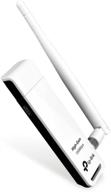
High Gain Wireless Network Adapter - TP-Link Nano USB Wifi Dongle with 150Mbps Speed for PC Desktops and Laptops. Compatible with Win10/8.1/8/7/XP Linux 2.6.18-4.4.3, Mac OS 10.9-10.15 (TL-WN722N)

46 Review
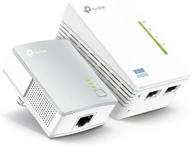
📶 Enhance and Expand Your Network with TP-Link AV600 Powerline WiFi Extender and WiFi Booster (TL-WPA4220 KIT)

44 Review
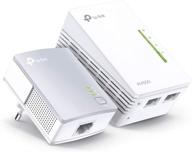
Enhance Your WiFi Range with TP-Link TL-WPA4220KIT 300Mbps AV500 Powerline WiFi Extender Start Kit

37 Review
Another interesting products
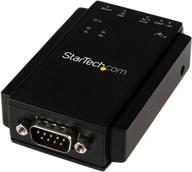
🔌 StarTech.com NETRS232 Serial to IP Ethernet Device Server - DIN Rail Mountable - Serial Device Server - Serial Over IP Device Server (Black)

4 Review
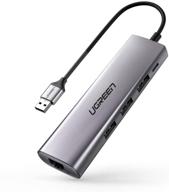
UGREEN USB 3.0 Ethernet Adapter Hub with RJ45: Fast Gigabit Ethernet Converter, 3 Ports USB 3.0 Hub Compatible for MacBook, iMac, Surface Pro, Chromebook, Laptop, PC

11 Review
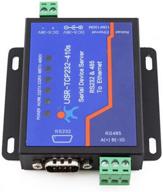
🔌 USR-TCP232-410s: RS232/RS485 Serial to Ethernet Adapter/IP Device Server with DHCP/DNS Support

4 Review

🔌 CERRXIAN RS232 to Ethernet Serial Device Server - TCP/IP Converter with 1Port DB9 RS232 Serial to Ethernet Connectivity

3 Review

